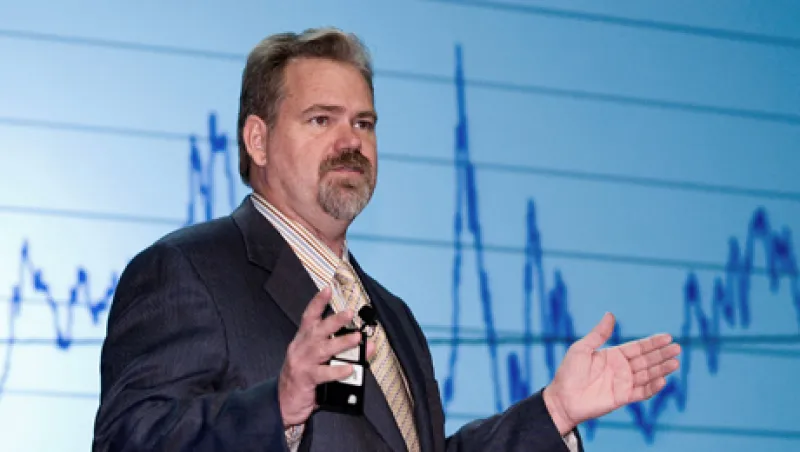Traditional bond index funds have an important flaw, says Robert Arnott, chairman and CEO of Research Affiliates, an investment firm based in Newport Beach, California. The indexes are cap-weighted. Under the system, more assets go to the issuers that are most heavily indebted. To provide a better alternative, Arnott is pioneering fundamental index funds, which weight bond issuers according to their ability to service debt. Research Affiliates now maintains RAFI benchmarks that track such bond sectors as investment-grade corporate, high yield, and emerging markets. Two ETFs follow the RAFI benchmarks: PowerShares Fundamental High Yield Corporate Bond (PHB) and PowerShares Fundamental Investment Grade Corporate Bond (PFIG). Arnott tells Institutional Investor contributor Stan Luxenberg that the new benchmarks can help to lower risk.
1. What is wrong with traditional benchmarks, such as the Barclays Capital U.S. Aggregate Bond index?
The Barclays index has a big percentage of its assets in U.S. Treasuries. As the government issues more debt, funds that track the benchmark must invest more in Treasuries. That just doesn’t make sense. Why do you want to lend more to the companies or countries that are most deeply in debt? With fundamental funds, we lend to borrowers in proportion to their ability to service debt. For corporate bonds, we give more weight to issuers with greater sales, dividends, and other indicators. Those are crude measures of debt service capacity. But they provide some guidance. If a company can still afford to pay dividends, then it certainly can pay the interest on its bonds.
2. How have fundamental benchmarks performed in backtesting?
You would expect the fundamental benchmarks to be a little less risky than cap-weighted indexes, and that shows up in the data. Fundamental indexes are less volatile and have higher average credit ratings. You would expect the fundamental indexes to have lower yields because of their added safety. But that is not true. The fundamental index yields are about comparable to the traditional benchmarks. Overall, the fundamental indexes have lower risks and higher returns than cap-weighted indexes. The fundamental benchmarks that track investment-grade corporate bonds have delivered 1 percentage point more in annual total returns. For high-yield bonds, there is about a 3 percentage point advantage. There is a 2 percent to 3 percent advantage for emerging sovereign debt.
3. How has the PowerShares Fundamental High Yield Corporate Bond ETF performed since it adopted the RAFI benchmark in 2010?
When lower-quality bonds were tumbling, the fundamental index tumbled much less. When lower-quality bonds were soaring, the fundamental index soared less. In 2010, investors became complacent about risk and embraced lower-quality bonds. In that environment, the fundamental index lagged. In 2011, people remembered that risk has a downside, and there was a return to a focus on safety. For the year, the fundamental index performed better. For the two-year period, the fundamental index had distinctly less risk and moderately higher returns than the cap-weighted benchmark.
4. How are your international benchmarks different from traditional indexes?
Because the cap-weighted benchmarks emphasize borrowers with the most debt, they end up giving heavy weight to countries such as Greece and Japan. We emphasize the countries that need debt the least. To find those with the most capacity to service debt, we weight our benchmarks according to such measures as a country’s GDP, population, and energy consumption. GDP is a measure of how prosperous a country is. If a country does not know how to put energy to use, then it will not be able to put people and resources to work.
5. Have investors been adopting the fundamental benchmarks?
We are still in the early stages. The two ETFs have combined assets of a little less than $1 billion. A lot of institutions are studying the idea, but there have been no adoptions yet. I am expecting that there will soon be one or two big adopters who will experiment with the idea.






